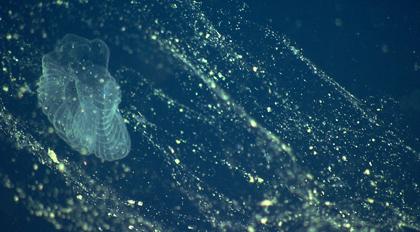Jellyfish have much to do with the carbon cycle
2005/06/13 Rementeria Argote, Nagore - Elhuyar Zientziaren Komunikazioa

Oceanographers have long been trying to know the carbon cycle at the bottom of the sea, but there are still missing pieces to know the entire cycle. As one of the important pieces missing are the jellyfish, especially the larbazaars.
The larbazaars are part of the zooplankton, so they are very small, but they can have a metre wide if you consider the network that surrounds them. In fact, the larbazeo is surrounded by similar networks made with mucus in which they feed with filtered nanoplankton. When the net ages, the larbazeo pulls it and does another. This launched net falls to the bottom of the sea and drags those who are on the road.
In California, researchers from the aquarium of the Bay of Monterrey have measured the amount of sediments that these networks carry to the bottom and seems to be equal to the detritus, that is, the remains of dead animals. For the measurement, marine background recordings have been used, among other things, and although it is difficult, they have also collected larvae grains through a robot.
Photo: (c) 2000 MB



